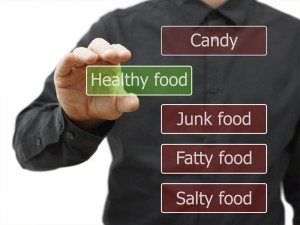Healthy Eating – Impossible?
 The IDEA Fitness Journal is my monthly goto magazine relative to new and interesting information regarding the wellness industry. This magazine provides a tremendous amount of insight on fitness, nutritional and emotional topics.
The IDEA Fitness Journal is my monthly goto magazine relative to new and interesting information regarding the wellness industry. This magazine provides a tremendous amount of insight on fitness, nutritional and emotional topics.
In the March 2015 issue, there is a great article about healthy eating entitled, “What You Don’t Know About Food Labeling Could Undermine Your Health” by Megan Senger. I was amazed at all of the ways we are marketed to and how it may impact our food choices.
How Marketing Affects Healthy Eating
Below are some of the highlights from the article.
- Yoni Freedhoff, MD states, “If the front of the package needs to convince you of the healthfulness of its contents, there’s a darn good chance its contents aren’t healthful.” When you step back and think about this concept, it makes a lot of sense. When was the last time you walked through the produce section of the grocery store and saw a big kiosk stating the benefits of broccoli and why you should BUY NOW!
- Here’s a statistic for all of us to digest (no pun intended. Ok, maybe a little one). “In 2012, $116M was spent marketing healthy fruits and vegetables. This sounds pretty impressive, until you consider that $4.6B was spent marketing fast food.” If you think about how marketing affects our consumer behavior when it comes to brands such as Samsung, Apple, Nike, etc, it is no wonder that we are equally affected when it comes to food brands and the obesity growth rate! Wow!
- The Health Halo Effect occurs when we read the front of the box and decide to buy it because it has health claims on it which resonate with us, such as rich in Omega-3, supports immunity, low fat. When packaging has health claims on the front, we typically eat 44% more of the food. However, keep in mind these health claims only tell half of the story so it is important to read the nutritional label. For example, more and more research supports the fact that fat is not the enemy but processed sugar is. So, when we see low fat, we may say, “great!” however food manufacturers typically add in more sugars or, worse, fake sugars into the product to support the taste of the product. In the end, you end up eating more calories because you believe it is healthy so you can and end up being hungrier sooner because of the fat limitation.
- Research a food claim before you buy it. For example, the word “natural” on food packaging helps sells over $40B a year and 60% of all consumers look for this labeling when buying food. However, the only governing body that regulates its use is the USDA, which only oversees meat, poultry and eggs. This means that when you see “natural” on produce and many packaged foods it is largely meaningless.
Healthy Eating Advice
The end of the article gives some good advice on what you should consider before you buy. Here’s a summary.
- Beware the hype. The more nutritional claims on the front of the package, the less healthy the food. Observed by a Yale Researcher.
- Beware the Health Halo. We tend to eat more of something that has a Health Halo, such as low fat. Instead, buy what you want, just eat smaller portions.
- Read the back. Understand the balance between protein, fat and carbohydrates.
- Use the web. Go to greenerchoices.org to better understand the background on all of the 150 terms that regulated by our government.
- Eat whole foods as often as possible. The best way to know what is in your meal is to prepare your meal using whole foods!
Please consider this the next time you go food shopping.
In good health!
Mike
